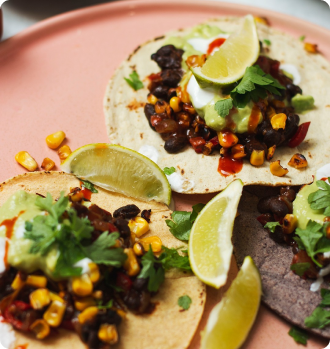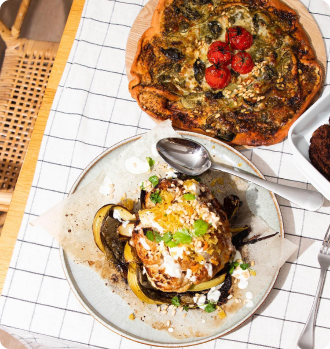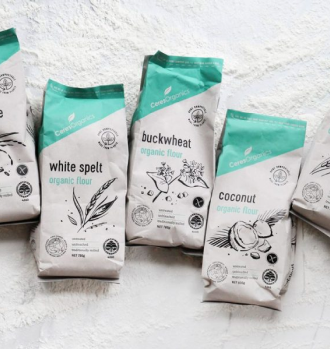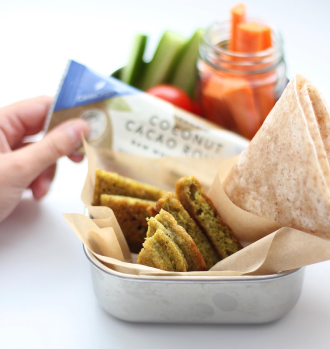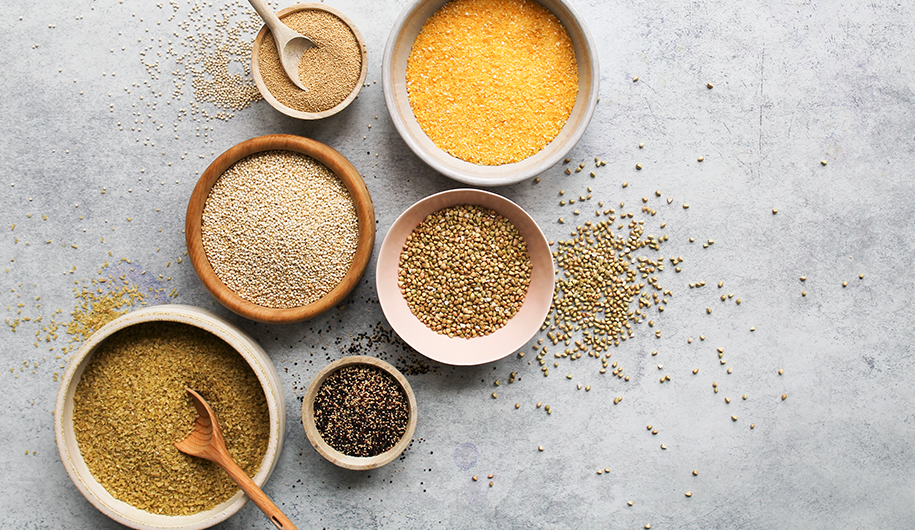
7 nutrient-dense alternatives to white rice
White rice has long been a pantry staple, and for good reasons: it’s versatile, filling, affordable, and easy to cook. So you've seen all sorts of different grains and seeds on your Instagram or Facebook feed and you're thinking "What is Quinoa? How do I use it?". Don't worry, it's not as scary to cook as it seems!
If you're keen to mix things up, there are plenty of interesting and nutritious alternatives to white rice that taste just as delicious.
Here are seven of our favourites.
1. Organic Quinoa (White)
Light, fluffy, and a little bit nutty, white quinoa looks like white rice, but it tastes even better and packs a much bigger nutritional punch. Quinoa is often mistaken for a grain, but it’s actually a seed. It’s easy to digest and ideal for people avoiding grains and gluten.
Health benefits of white quinoa: Quinoa is a complete protein containing all nine essential amino acids. It’s also high in fibre, magnesium, riboflavin (B2), iron, and antioxidants.
How to cook white quinoa: Rinse one cup quinoa under running water, then add to a pot with two cups of water or stock. Cover and bring to the boil. Once boiling, reduce heat and simmer until all the liquid is absorbed (usually about 15-20 minutes).
White quinoa recipe ideas: Black Bean & Quinoa Bake, Toasted Quinoa and Greens, Mexican Vegan Quinoa & Bean Tacos.
2. Organic quinoa (red)
So what's the difference between White and Red Quinoa? They are nutritionally similar but the major difference is in taste. Slightly nuttier, chewier, and richer than white quinoa, red quinoa is has a more nuttier flavour and holds it's shape well during cooking, making it an ideal base for salads and vegetable dishes.
Health benefits of red quinoa: High in protein, fibre, magnesium, B12, iron, and manganese. Contains slightly more fibre than white quinoa.
How to cook red quinoa: Same as white quinoa (see above).
Red quinoa recipe ideas: Red Quinoa Salad with Nashi Pear, Very Green Quinoa Salad.
3. Organic quinoa-rice blend
All the benefits of quinoa, blended with the benefits of unhulled brown and black rice. Brown and black rice retain it's outer bran layer (which has been removed from white rice) resulting in higher fibre and more nutrients. A bowl of our Organic Quinoa Rice Blend will up the nutritional value of any meal.
Health benefits of quinoa-rice blend: High in protein, fibre, B vitamins, iron, magnesium, and folate (folic acid).
How to cook quinoa-rice blend: Soak the quinoa-rice blend for at least 30 minutes before cooking. Add one cup of quinoa-rice to one and half cups of water in a pot. Cover, bring to the boil, and simmer for 20 minutes until the liquid is absorbed and the rice is cooked.
Quinoa-rice recipe ideas: Enjoy on its own or use as a base for curries, mexican dishes, or salads.
4. Organic buckwheat
Don’t be fooled by the name; buckwheat is nothing like wheat. It’s not even a grain! It’s actually a fruit-seed that looks and tastes like a wholesome grain. You can buy buckwheat flour and buckwheat cereal, but if you’re looking for a white rice alternative, be sure to buy buckwheat groats. These tasty little gems can be cooked in about 10 minutes.
Health benefits of buckwheat: High in fibre, minerals, antioxidants, and plant compounds (such as rutin).
How to cook buckwheat: Add one cup of organic buckwheat and two cups of water to a pot. Bring to the boil, then cover, reduce heat, and simmer until the groats are tender (this usually takes about ten minutes).
Buckwheat recipe ideas: Buckwheat & Bean Salad with Sundried Tomato Dressing.
5. Organic millet
Millet is an ancient cereal. It tastes nutty and slightly sweet, and has a light and fluffy texture, making it an ideal alternative to white rice. It’s also one of the few alkaline (non-acid forming) grains, which means it’s easy to digest. Millet can be cooked just like rice or it can be blended to a consistency similar to mashed potatoes.
Health benefits of millet: High in folate, choline, magnesium, potassium, phosphorus, and zinc. Also high in protein.
How to cook millet: In a pot, heat oil over medium heat, then add one cup of millet. Gently toast the millet until it turns golden, then add two cups of water (or stock) and bring to the boil. Once boiling, reduce heat and simmer until cooked (about 15 minutes).
Recipe ideas: Millet Nourish Bowl with Tahini Dressing, Millet Cakes.
6. Organic bulghur wheat
If you’ve ever enjoyed a tasty tabbouleh salad, you’ll know the flavour and texture of bulghur wheat. It’s the core ingredient in tabbouleh and is a hearty, ‘whole wheat’ – meaning it’s far less processed than regular wheat and contains more nutrients.
Health benefits of bulghur wheat: High in magnesium, iron, plant-based protein, and dietary fibre.
How to cook bulghur wheat: Fun fact – bulghur wheat is actually partially pre-cooked! All you need to do is soak in some boiling water for about 10 minutes and it’s ready to eat.
Bulghur wheat recipe ideas: Rosemary Bulghur Wheat with Paprika Chickpeas.
7. Organic super grains
Containing three types of quinoa (white, red, and black), our Organic Super Grains blend makes a protein-packed snack on its own or a great base for vegetables, curries, Mexican dishes, and other main meals.
Health benefits of Ceres Organic Super Grains: All types of quinoa are high in protein, as well as essential vitamins and minerals.
How to cook Ceres Organic Super Grains: Rinse one cup of Super Grain Mix under running water, then add to a pot with two cups of water or stock. Cover and bring to the boil. Once boiled, reduce heat and simmer for about 15 minutes (or until all liquid is absorbed).
Recipe ideas: Herbed Grains with Roasted Vegetables and Avocado Dressing.
Why eat organic grains?
Organic grains and seeds are grown without synthetic pesticides, herbicides, and fertilisers, so none of these nasties make it into your food.
Organic grains are also grown in a sustainable way that’s great for the health of our soils, ecosystems, and people. Organic farming practices are intrinsically restorative, which is why organic produce is so good for both your body and the planet.
The organic grains mentioned above are also all gluten-free (with the exception of bulghur wheat), making them ideal for those looking for gluten-free alternatives.



